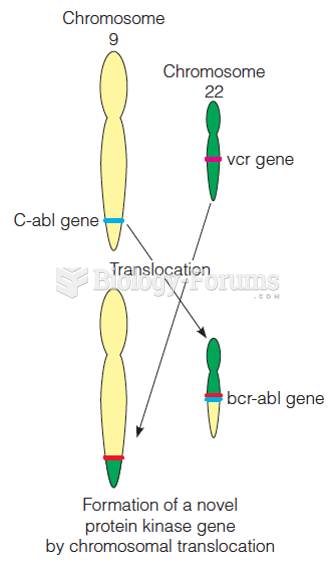Answer to Question 1
Energy needs change as pregnancy progresses. In the first trimester, the pregnant woman needs no additional energy, but as pregnancy progresses, her energy needs rise. She requires an additional 340 kcalories daily during the second trimester and an extra 450 kcalories each day during the third trimester. Well-nourished pregnant women meet these demands for more energy in several ways: some eat more food, some reduce their activity, and some store less of their food energy as fat. A woman can easily meet the need for extra kcalories by selecting more nutrient-dense foods from the five food groups.
If a woman chooses less nutritious options such as sugary soft drinks or fatty snack foods to meet her energy needs, she will undoubtedly come up short on nutrients. The increase in the need for nutrients is even greater than that for energy, so the mother-to-be should choose nutrient-dense foods such as whole-grain breads and cereals, legumes, dark green vegetables, citrus fruits, low-fat milk and milk products, and lean meats, fish, poultry, and eggs.
Ample carbohydrate (ideally, 175 grams or more per day and certainly no less than 135 grams) is necessary to fuel the fetal brain and spare the protein needed for fetal growth. Fiber in carbohydrate-rich foods such as whole grains, vegetables, and fruit can help alleviate the constipation that many pregnant women experience.
The protein RDA for pregnancy is 25 grams per day higher than for non-pregnant women. Pregnant women can easily meet their protein needs by selecting meats, seafood, poultry, low-fat milk and milk products, and protein-containing plant foods such as legumes, tofu, whole grains, nuts, and seeds. Some vegetarian women limit or omit protein-rich meats, eggs, and milk products from their diets. For them, meeting the recommendation for food energy each day and including generous servings of protein-containing plant foods are imperative. Because use of high-protein supplements during pregnancy may be harmful to the infant's development, it is discouraged unless medically prescribed and carefully monitored to treat fetal growth problems.
The high nutrient requirements of pregnancy leave little room in the diet for excess fat, especially solid fats such as fatty meats and butter. The essential fatty acids, however, are particularly important to the growth and development of the fetus. The brain contains a substantial amount of lipid material and depends heavily on long-chain omega-3 and omega-6 fatty acids for its growth, function, and structure.
Answer to Question 2
A critical period is a finite period during development in which certain events occur that will have irreversible effects on later developmental stages; usually a period of rapid cell division. For example, in the last 7 months of pregnancy, the fetal period, the fetus grows 50 times heavier and 20 times longer. Critical periods of cell division and development occur in organ after organ. Most successful pregnancies last 38 to 42 weeks and produce a healthy infant weighing between 6.8 and 7.9 pounds.
Each organ and tissue type grows with its own characteristic pattern and timing. The development of each takes place only at a certain timethe critical period. Whatever nutrients and other environmental conditions are necessary during this period must be supplied on time if the organ is to reach its full potential. If the development of an organ is limited during a critical period, recovery is impossible. For example, the fetus's heart and brain are well developed at 14 weeks; the lungs, 10 weeks later. Therefore, early malnutrition impairs the heart and brain; later malnutrition impairs the lungs.
The effects of malnutrition during critical periods of pregnancy are seen in defects of the nervous system of the embryo (explained later), in the child's poor dental health, and in the adolescent's and adult's vulnerability to infections and possibly higher risks of diabetes, hypertension, stroke, or heart disease. The effects of malnutrition during critical periods are irreversible: abundant and nourishing food, consumed after the critical time, cannot remedy harm already done.







